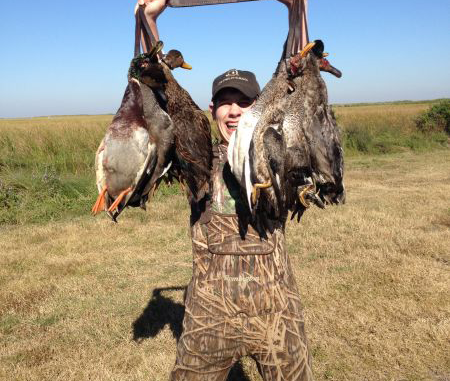
Reynolds estimates more than 2.5 million birds in state for opening weekend
Because of bad weather on Wednesday and Thursday, Larry Reynolds literally just stepped off the plane this afternoon and wrapped up flying the state’s November aerial waterfowl survey.
While he won’t have hard data crunched because of the weather delay until Monday, the initial news couldn’t be much better for west and coastal zone hunters who will be heading out to their blinds tomorrow morning.
“Let’s just say it’s going to be the best November survey in at least the last 10 years,” said Reynolds, the waterfowl study leader for the Louisiana Department of Wildlife and Fisheries. “The survey I just flew looked a lot more like a December or January survey than a November survey.”
Numbers aren’t official, but he estimated the final count would be in the 2.5- to 2.8-million range for the survey, which includes the coastal zone of the state from the Texas line to the mouth of the Mississippi River, as well as Catahoula Lake.
For comparison, last year’s abysmal November survey totaled only 1.02 million birds, with the long-term November average being 2.04 million.
“The reality is we have lots of gadwalls, lots of pintails, there’s green-wings, there’s blue-wings, there are shovelers and we even have a good bunch of divers,” he said. “One of the interesting things from today (when he flew the southeastern part of the state) is there are a lot of scaup hanging out in the saline marshes on the transects. That usually doesn’t happen until January.”
The southwest part of the state also was solid, and could have picked up more birds since he flew there on Monday and Tuesday of this week.
“The rice fields in the southwest were dryer than they were in September and they really were not holding that many ducks. The ducks in the southwest were in the marshes,” he said. “The marshes had the vast majority of the birds as opposed to the ag fields.”
Action could be fast and furious tomorrow in the upper-Terrebonne marshes, he said.
“I guarantee you the hunters in the upper-Terrebonne marshes will see a pile of ringneck ducks. We haven’t seen that number of ducks in that part of the state since Katrina and Rita,” he said. “Katrina ripped things up to the east and Rita ripped things up to the west. That marsh in upper-Terrebonne over to Lake Salvador had lots and lots of ducks in 2005. Those pieces of marsh were just loaded with birds, and it hasn’t been that good since. On Tuesday, when I flew that line, there were tons of coots and tons of ringnecks, so those guys will see plenty of ducks.”
He also suggested hunters near the mouth of the Mississippi in Venice and in the Baptiste Collette area should also see plenty of birds.
“The mouth of the river really had a lot of ducks, and then there were quite a few scaup out in Breton Sound,” he said.
Catahoula Lake was about average, he said, with roughly 140,000 birds counted, including about 99,000 pintail.
“I was kind of disappointed in the number of ducks I saw around Delacroix and Lake Salavador,” he said. “It was really quiet. But the Caernarvon line was loaded up with gadwalls and blue-wings and green-wings.”
Reynolds covered the first 21 transect lines on Monday and Tuesday before the cold front kept him grounded on Wednesday and Thursday.
Today he flew from about Houma to the mouth of the river, and it’s possible even more ducks arrived since his initial counts early this week.
“There may be even more birds than I saw Monday and Tuesday from this second blast of cold air,” he said.
LouisianaSportsman.com will provide a link to the completed November survey when it becomes available on Monday.


